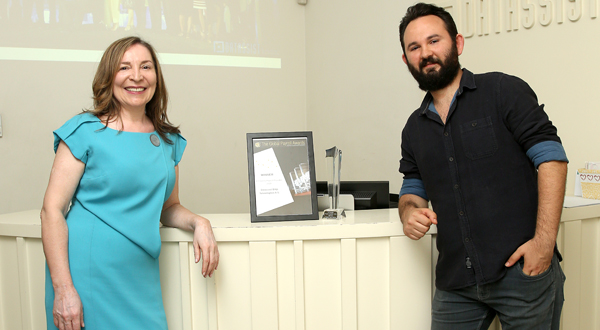As Turks, we have this saying: “Eğitim şart” (Training is a must) that has become a cliche over the years. We are all aware of the importance of knowledge but sometimes we’re not clear on where and how to get the knowledge. Who to learn from is the key question we need to answer: someone who has knowhow and expertise in the field you’d like to gain knowledge, someone who witnessed best practices in their career and is willing to give back to the public by sharing their years of practice and knowledge.
There are two essential components to a training: 1. the knowledge, experience and sector reputation of the trainer, 2. How the trainer communicates it, including presentation techniques, tailoring content based on the participants’ learning needs. One would not happen without the other, if it would, the training would not be a successful one.
We talked about payroll trainings with Founder and Chairwoman Ayşe N. Uça ve Genel Manager Umut Özbağcı of Datassist, the first payroll provider in Turkey that provides payroll services for 20 years to a wide range of clients from SMEs to multinationals and trains reputable payroll professionals through its technical hands-on trainings.
– What makes a professional training a good one?
ANU: There are so many professional trainings given by certain institutions. What makes a training a good one is living and breathing this area of expertise. We only give trainings of payroll and payroll practices within the Turkish Labor Law. We do not have any intention of providing trainings in another subject. Our trainings do not only aim at equipping payroll providers with the right tool but providing a unique insight to the payroll profession with a solid depth of knowledge.
UÖ: Trainings should not be seen as sitting in class and listening to the instructor. This is only a dysfunctional way of learning. It is all reactive on the part of the trainees. Any successful training should have active participants. And in order to have active participants, the trainers need to design a course flow that encourages interaction.
– What should a successful trainer pay attention to?
ANU: Explaining the content and hoping the audience understands it all is the wrong expectation. What we try to do at Datassist trainings is delivering the content with better techniques each year. We let our participants interact with the trainers. We believe that trainees who interact tend to learn more than the ones who just listen. Interaction makes the knowledge their own.
– What is the purpose of the payroll trainings?
ANU: The purpose of the training differs based on the profiles of the participants. Some professionals switch to HR from other disciplines and they would like to have some technical knowledge even if they won’t do day-to-day payroll calculations. This is one profile.
Another profile is professional who would like to become payroll professionals. This is a trending career path in the global workplace.
And yet another profile is executives who would like to design the payroll process correctly and improve business processes and even corporate values. This executive design focus is incorporated in a different training.
UÖ: One of the trainings on Payroll Service Design does not only focus on payroll and labor law legislations but trains professionals to design the workflow for your company’s payroll processes. Design Thinking is an academic model that has been successfully implemented in the business world. Even if it is an area that you have been specialised in for many years having acquired a depth of knowledge, designing a process requires a different set of skills and we do provide the required skills with a focus on payroll practices.
For example, our Global Workforce Training focuses on the trending topic of global mobility.
With professionals working outside of their country of origin, it became rather complicated to manage labor law legislations and taxes. Knowing local labor law and payroll practices is not enough anymore. This training helps professionals understand complexities deriving from global labor laws, different social security and tax applications. As the world changes and progresses, so does the content of our training.
– Can you tell us more about Workforce Mobility?
ANU: Workforce mobility is an area that keeps us up at night. In order to have a good grasp of the global workforce complexities, we need to engage professionals from different disciplines. There is no way of knowing all legislations of all countries in the world or being familiar with all practices. We focus on International tax and legal frameworks and closely follow the changes and update ourselves.
– What would you recommend to those who intend to participate in a technical training?
ANU: There are trainings promising to deliver multiple subjects within a two day training. For example, an HR training offers one day of payroll training. In most cases, the trainer is not a payroll practitioner who could only explain payroll from a generalists viewpoint. This kind of all-in-one trainings leave participants in a more confused state rather than providing them a foundational knowledge. At Datassist, we select our trainers among practitioners who can explain daily practices and give tips on payroll calculations from a practitioner’s perspective. My recommendation would be: whichever technical training it is, take a training from the practitioner rather than generalist or theorist.
Ela EROZAN GURSEL





